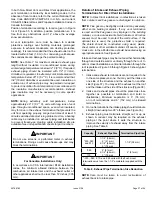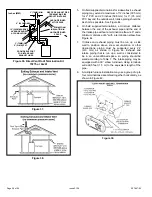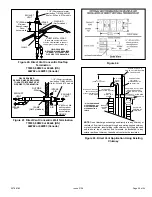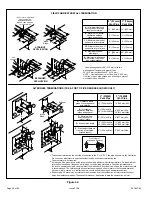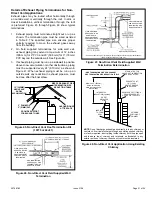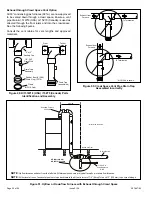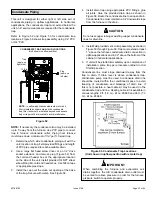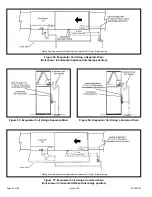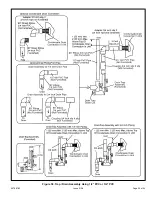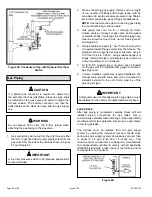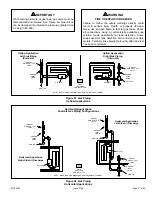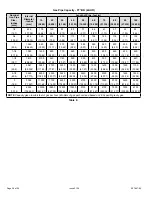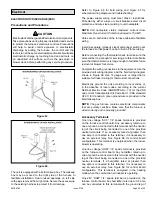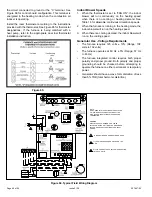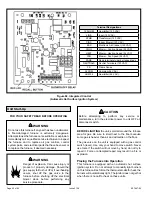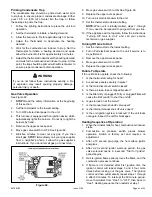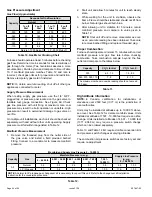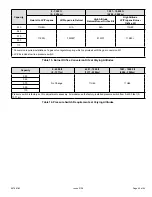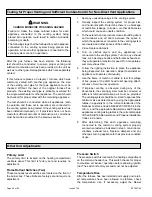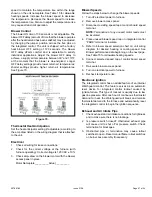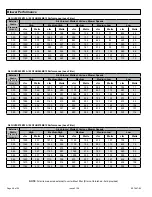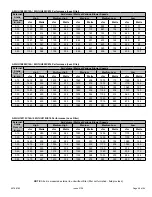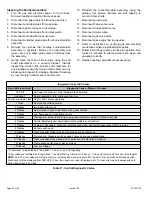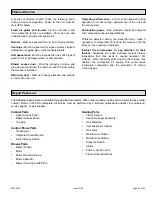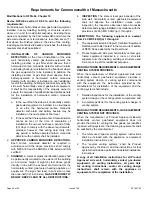
507867-02
Page 40 of 54
Issue 2128
the circuit connected to ground or the “C” terminal. See
Figure 68 for control board configuration. This terminal is
energized in the heating mode when the combustion air
inducer is operating.
Install the room thermostat according to the instructions
provided with the thermostat. See Figure 65 for thermostat
designations. If the furnace is being matched with a
heat pump, refer to the appropriate dual fuel thermostat
installation instruction.
Figure 65.
Indoor Blower Speeds
1. When the thermostat is set to “FAN ON”, the indoor
blower will run continuously on the heating speed
when there is no cooling or heating demand. See
Table 16 for allowable continuous circulation speeds.
2. When the furnace is running in the heating mode, the
indoor blower will run on the heating speed.
3. When there is a cooling demand, the indoor blower will
run on the cooling speed.
Generator Use - Voltage Requirements
•
The furnace requires 120 volts ± 10% (Range: 108
volts to 132 volts)
•
The furnace operates at 60 Hz ± 5% (Range: 57 Hz
to 63 Hz)
•
The furnace integrated control requires both proper
polarity and proper ground. Both polarity and proper
grounding should be checked before attempting to
operate the furnace on either permanent or temporary
power.
•
Generator should have a wave form distortion of less
than 5% THD (total harmonic distortion).
Figure 66. Typical Field Wiring Diagram
NOTE-
IF ANY WIRE IN THIS APPLIANCE IS REPLACED,
IT MUST BE REPLACED WITH WIRE OF LIKE
SIZE, RATING, INSULATION THICKNESS AND
TERMINATION.
WARNING-
ELECTRIC SHOCK HAZARD. CAN CAUSE
INJURY OR DEATH. UNIT MUST BE GROUNDED
IN ACCORDANCE WITH NATIONAL AND LOCAL
CODES.
‘R’ IS REQUIRED ON SOME OUTDOOR UNITS
L13 POWER CHOKE USED ON 3/4 AND 1 HP
ONLY
S145 IS USED WITH GAS VALVE WHEN APPLIED
IN LP GAS UNTIS


